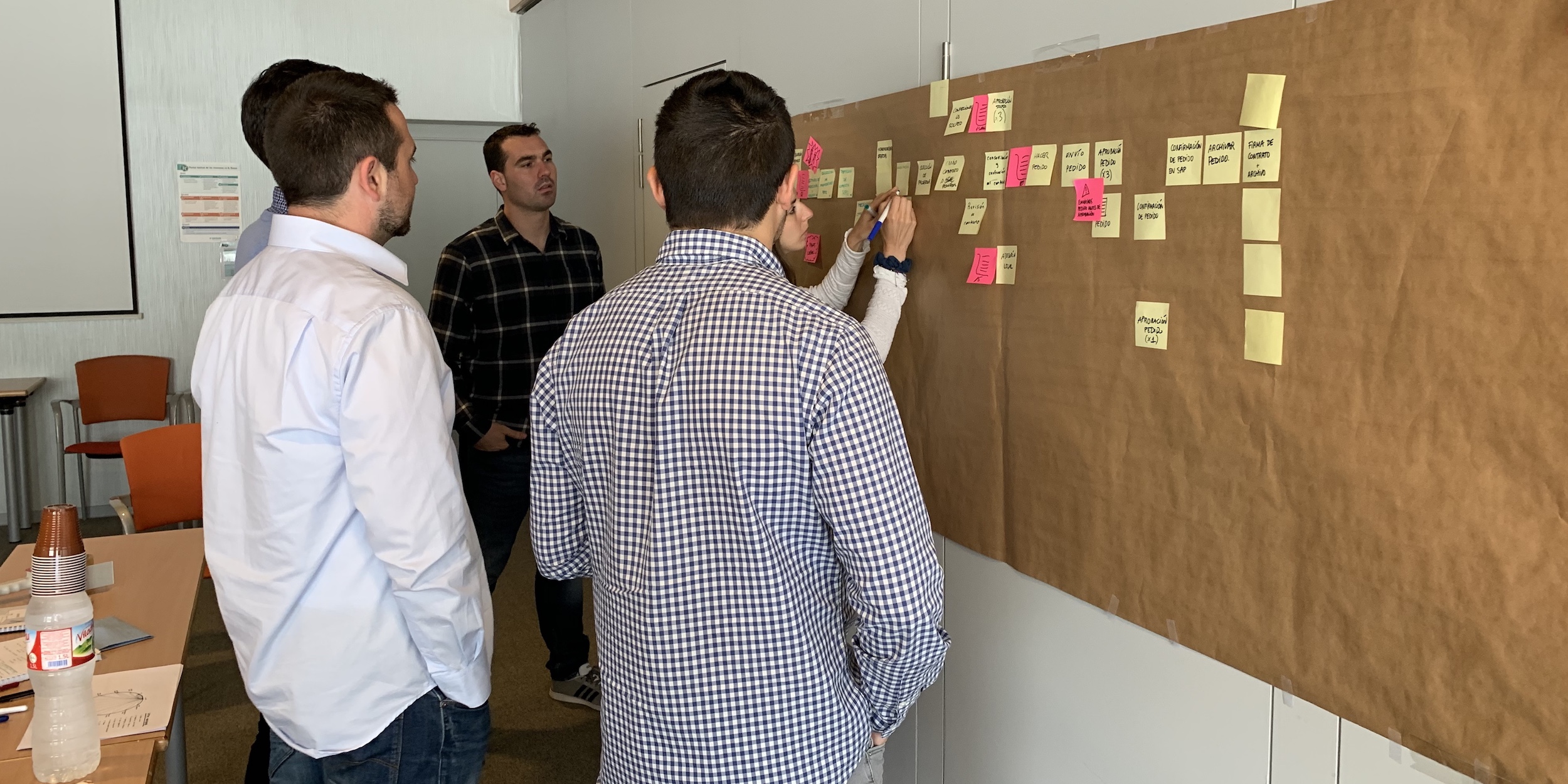
The Sunday-night barista
FEATURE – The author looks back at her time at Starbucks Coffee Company and reflects on the role of leadership in facilitating the spread of lean thinking across the organization.
Words: Karen Gaudet, Director of Learning, Lean Enterprise Institute
Photo credit: Toshio Chan / Shutterstock.com
At Starbucks, once standard work routines had been developed for many of the components of the work happening on the line and the new operating system had been clearly defined, we started to think about how we could effectively spread that knowledge. We had to find the best way to engage leadership at each location to help them understand and deploy the system.
As a Regional Director for New England, I had over 100 cafés in my portfolio. My challenge was to ensure that the operating system could take root in every location and reach every single team member – all the way to what I called the “Sunday-night barista”. Sunday night in the cafes is the shift that fewer people work, so we knew that if we could provide the barista working at our slowest time with an understanding of the system we would essentially succeed in our efforts to spread the good thinking across the many layers of the organizational structure. So, I challenged myself and my team to focus on this.
As we moved from one location to another, the improvement of the work provided the opportunity to start communicating on a different level. Among other things, the system did a great job at clarifying the problems that existed in the work but also in communicating to others across the team what was working and what was not. As we deployed it and focused on the different elements of the work together as a team, the work itself became the biggest communicator and allowed us to develop a common language and cultural belief. We had never had that before: before Starbucks embraced lean, problems would be based on one person’s opinion or another and copy-and-paste solutions would be handed to different locations without really knowing whether they were experiencing the same problem the best practice meant to address.
A LEADER-LED MODEL
In a bid to cascade knowledge, our district managers would select a first leader of a location they would work with side by side to help build their capability. As they did that, they would become aware of who inside that location was a key leader with the capability to develop other people’s capabilities.
The leader-led model designed by Scott Heydon and Josh Howell required leaders to learn in order to teach. With this in mind, we developed a deep-dive experience that would allow for each and every leader, manager and supervisor to learn the work, build work stories, write a play or practice demand planning, and then teach that to someone else. My district managers and I would go through the same exercise as everybody else, actually working the scenario we had written in a café at a peak time.
That’s when we fully realized the impact of the plan we had put together. Working on the line was always a humbling experience: it became a requirement that to train the system, you’d have to be able to work it. There was a level of learning that couldn’t be replicated through a training exercise, so we attached ourselves to the notion of understanding the work on the floor. Eventually, the fact that the work and the learning became so intertwined proved to be a defining factor for the sustainability of results.
Team members who were most practiced and demonstrated a strong ability to develop others were leveraged as leaders in other locations, which became a key contributor in succession planning for future leaders at every level. The problem-solving skills that were getting developed truly enabled team members to develop more effectively in a shorter period of time into leaders of others.
This approach proved challenging at times, because the pressure to realize results fast led to a tendency to simply copy and paste solutions as our old behaviors would resurface. This could potentially be really damaging, particularly at the beginning, when we were trying to develop the thinking rather than the solutions. We started to encourage people not to talk about “best practices”, but about “best thinking”: the solutions developed in one location could only work in another if that location has also developed the thinking. We knew that copy-and-paste robs people of the opportunity to grow because it takes away their ability to think.
REACHING THE CRITICAL MASS
There was a conscious effort by district managers to tackle the tendency to just copy and paste by going to where interest in a solution appeared – whether it was an A3, a board or how to build a work story – and really work to develop the underlying thinking necessary to make that solution a reality. We would typically refer to the tools as “bridges” that could help people cross the water, knowing that they go hand in hand with the cultural aspect of lean thinking.
As our operating system spread and the transformation gained velocity, it became harder to continue marrying up tools and behaviors. People wanted to shortcut their way to the result, for example trying to replace the play-building process with an ExCel spreadsheet rather than forcing the store manager to go to the gemba to truly understand the work. We fought really hard against it, because it was that very process that enabled the behavioral learning and cultural shift we needed to succeed.
At the same time, we realized that we had reached a tipping point, in which there were more team leaders in cafes that had adopted the new way of thinking than had not. Accepting the problems that we were unearthing and continuing to push towards that tipping point was enough to gain velocity in our work to spread lean thinking across the business, and it worked.
Another fundamental outcome of our work was that it allowed us as a team to fully define the coaching routine we needed to ensure that, as leaders, we could go into a location and add value much sooner than we ever could before. That’s when the full cultural shift took place and cafés and leadership started to feed off each other, reinforcing each other’s behaviors.
My experience at Starbucks has taught me that the spread and sustainment of lean thinking are part and parcel, and that without senior leadership engagement your chances of successfully reaching that Sunday-night barista are scarce. It is difficult as a leader to set down your arrogance of knowing and begin to understand, particularly in front of those you are leading. To one day simply say, “I don’t know. Let’s go see together to understand,” as opposed to spoon-feeding people the answer is one of the most freeing and rewarding steps a leader can take.
Want to Keep Learning?

Read Steady Work by Karen Gaudet, who managed 110 stores as a regional manager for Starbucks. She offers smart, practical business advice and a heartfelt personal story about how a continuous improvement system revitalized the retailer during the global financial crisis and helped employees in Newtown, CT, get through a national tragedy.
THE AUTHOR

Read more


THE NAKED GEMBA – Value stream mapping is a fundamental tool in any lean transformation. The author takes us the most common mistakes companies make using it, so that you can avoid the pitfalls.


PROFILE – Persevering, letting people inspire you and committing to continuous learning. These are the things you need to do to successfully embrace lean thinking and, it turns out, learn to play the violin.


NOTES FROM THE GEMBA – Follow Catherine on another one of her gemba walks around French companies. This time, she visits a manufacturer of inspecting machines near Bordeaux, with a visionary leader and a great story.


SERIES – The authors discuss the final elements in their 6CON process development model – CONtinuously Improve – making and sustaining consistent improvements over time that will produce even higher levels of performance.

